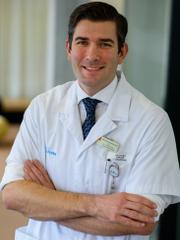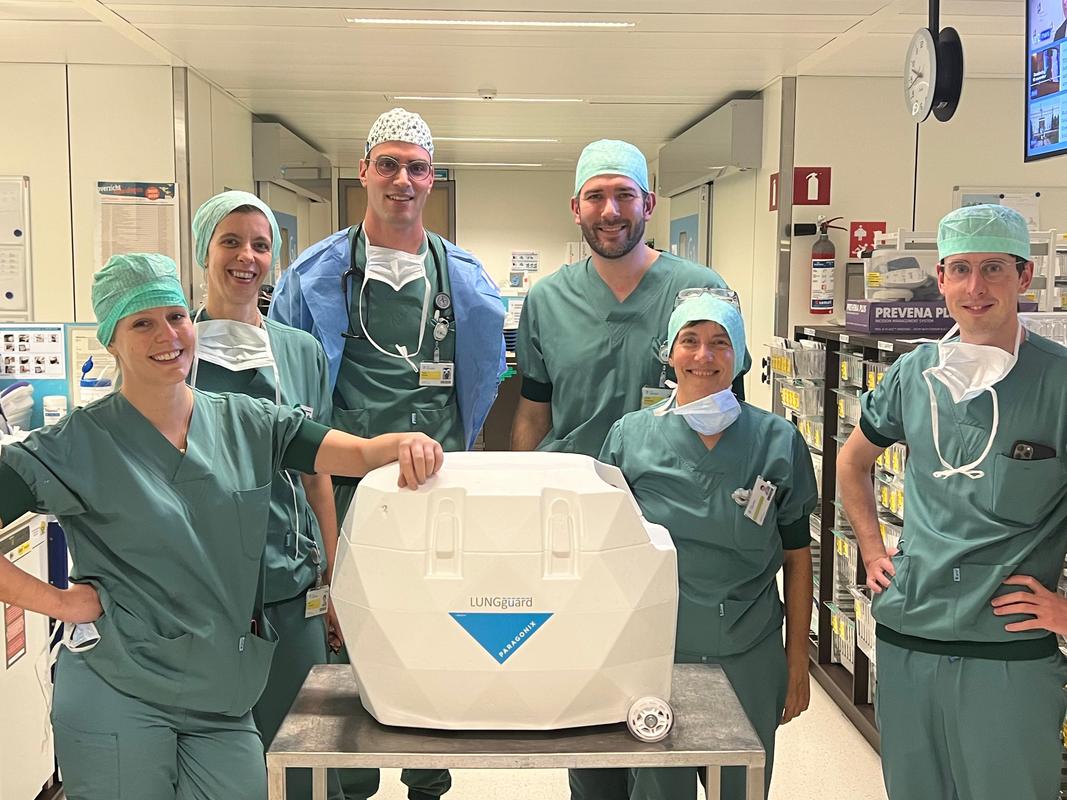A lung transplant is a life-saving procedure with several challenges. In addition to the long-term risk of rejection, the organ damage that occurs during storage of the donor lungs is responsible for many complications and prolonged hospital admission after transplantation.
Warmer storage
For more than fifty years, the gold standard has been to store donor organs on ice at around 0°C, wrapped in a protective liquid and submerged in a cool box with ice blocks. In the time span between the removal of the organ and the transplant, the cells slowly die, so that the storage period must be kept as short as possible and every transplant is a race against time.
Prof. dr. Laurens Ceulemans, transplant surgeon at UZ Leuven: “It has already been shown that tissues are better preserved at temperatures slightly above freezing. But it is only recently, thanks to technological innovations, that this principle also became applicable to donor organs."
Special preservation device
The new technique uses a special storage gel in a coolbox, developed in the United States by the company Paragonix Technologies. The system allows to maintain a constant temperature of between 4°C - 8°C for up to 48 hours. In the US, the preservation system has already been used in more than 200 transplants with successful results.
Last month, the first European patient received a lung transplant using the new technique at UZ Leuven. The patient is doing well and was allowed to go home after two weeks. The hospotil will continue to test the technique in future.
No more overnight transplants
In addition to better preservation of tissues, the new storage technique also has added value for healthcare providers, because overnight transplants can now be postponed until the next day. Prof. Ceulemans: “There are many advantages to being able to perform such a complex procedure during the daytime. Not only are the surgeons, anesthesiologists and nurses better rested, there is also more expertise available in the operating room. We expect that aspect to improve outcomes for our patients as well.”
If this positive experience is confirmed in more patients and in other transplant centres, the technique could become the new gold standard in the future. Its added value may also prove to be useful for other transplant organs.
There are many advantages to being able to perform such a complex procedure during the daytime. Not only are the surgeons, anesthesiologists and nurses better rested, there is also more expertise available in the operating roomProf. dr. Laurens Ceulemans, transplant surgeon at UZ Leuven
UZ Leuven as centre of expertise
In 2021 UZ Leuven performed 366 organ transplants or 39,3% of all organ transplants in Belgium. In total 119 lungs were transplanted during 58 double lung transplants and 3 single lung tranplants.
In recent years, UZ Leuven has built up an international reputation in the field of preservation techniques for all transplant organs (liver, heart, kidneys and lungs). These achievements are the result of thorough scientific research and interdisciplinary collaboration.
This new innovation of lung preservation also makes it possible to further optimise the existing lung machine perfusion technologies and to further refine the indications for the different preservation methods.

